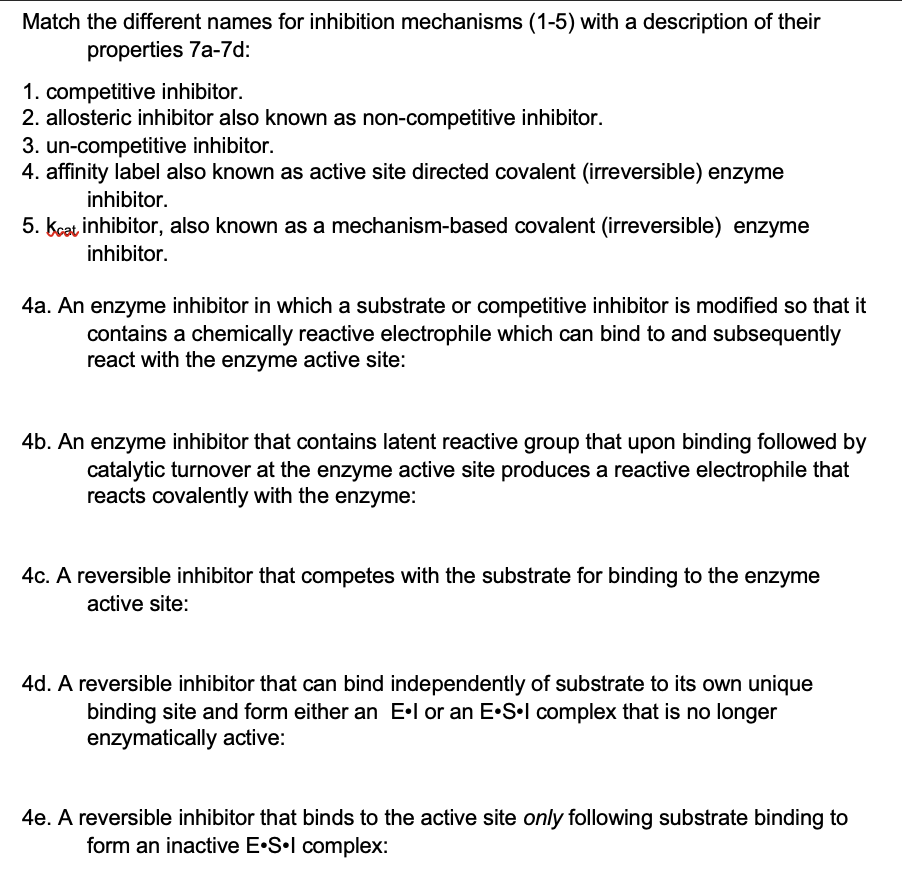Match the different names for inhibition mechanisms (1-5) with a description of their properties 7a-7d: 1. competitive inhibitor. 2. allosteric inhibitor also known as non-competitive inhibitor. 3. un-competitive inhibitor. 4. affinity label also known as active site directed covalent (irreversible) enzyme inhibitor. 5. Kcat inhibitor, also known as a mechanism-based covalent (irreversible) enzyme inhibitor. 4a. An enzyme inhibitor in which a substrate or competitive inhibitor is modified so that it contains a chemically reactive electrophile which can bind to and subsequently react with the enzyme active site: 4b. An enzyme inhibitor that contains latent reactive group that upon binding followed by catalytic turnover at the enzyme active site produces a reactive electrophile that reacts covalently with the enzyme: 4c. A reversible inhibitor that competes with the substrate for binding to the enzyme active site: 4d. A reversible inhibitor that can bind independently of substrate to its own unique binding site and form either an E.I or an E.S.I complex that is no longer enzymatically active: 4e. A reversible inhibitor that binds to the active site only following substrate binding to form an inactive E.S.I complex:
Enzyme kinetics
In biochemistry, enzymes are proteins that act as biological catalysts. Catalysis is the addition of a catalyst to a chemical reaction to speed up the pace of the reaction. Catalysis can be categorized as either homogeneous or heterogeneous, depending on whether the catalysts are distributed in the same phase as that of the reactants. Enzymes are an essential part of the cell because, without them, many organic processes would slow down and thus will affect the processes that are important for cell survival and sustenance.
Regulation of Enzymes
A substance that acts as a catalyst to regulate the reaction rate in the living organism's metabolic pathways without itself getting altered is an enzyme. Most of the biological reactions and metabolic pathways in the living systems are carried out by enzymes. They are specific for their works and work in particular conditions. It maintains the best possible rate of reaction in the most stable state. The enzymes have distinct properties as they can proceed with the reaction in any direction, their particular binding sites, pH specificity, temperature specificity required in very few amounts.

Trending now
This is a popular solution!
Step by step
Solved in 3 steps


